Blunt Lobed Woodsia (Woodsia obtusa subsp. obutsa*) of the Lady Fern (Woodsiaceae) family is a small to medium size, evergreen fern with thin leaves (fronds). The genus name recognizes Joseph Woods (1776-1864), an English Quaker architect who authored several books on plants of Europe and the British Isles. The specific epithet is Latin for “blunt”, a reference to the shape of leaflets (pinnae). In the U.S., it occurs in a broad swath from central Texas to southern Maine, extending as far north as the Great Lakes and as far south as the Florida panhandle. In Arkansas, Blunt Lobed Woodsia occurs statewide. It grows in shaded to partially shaded woodlands and thickets with well-drained mesic loam to rocky soils over limestone or sandstone, often in shaded embankments. It is also known as Blunt Lobed Cliff Fern. Ferns have a two-phase life cycle**.
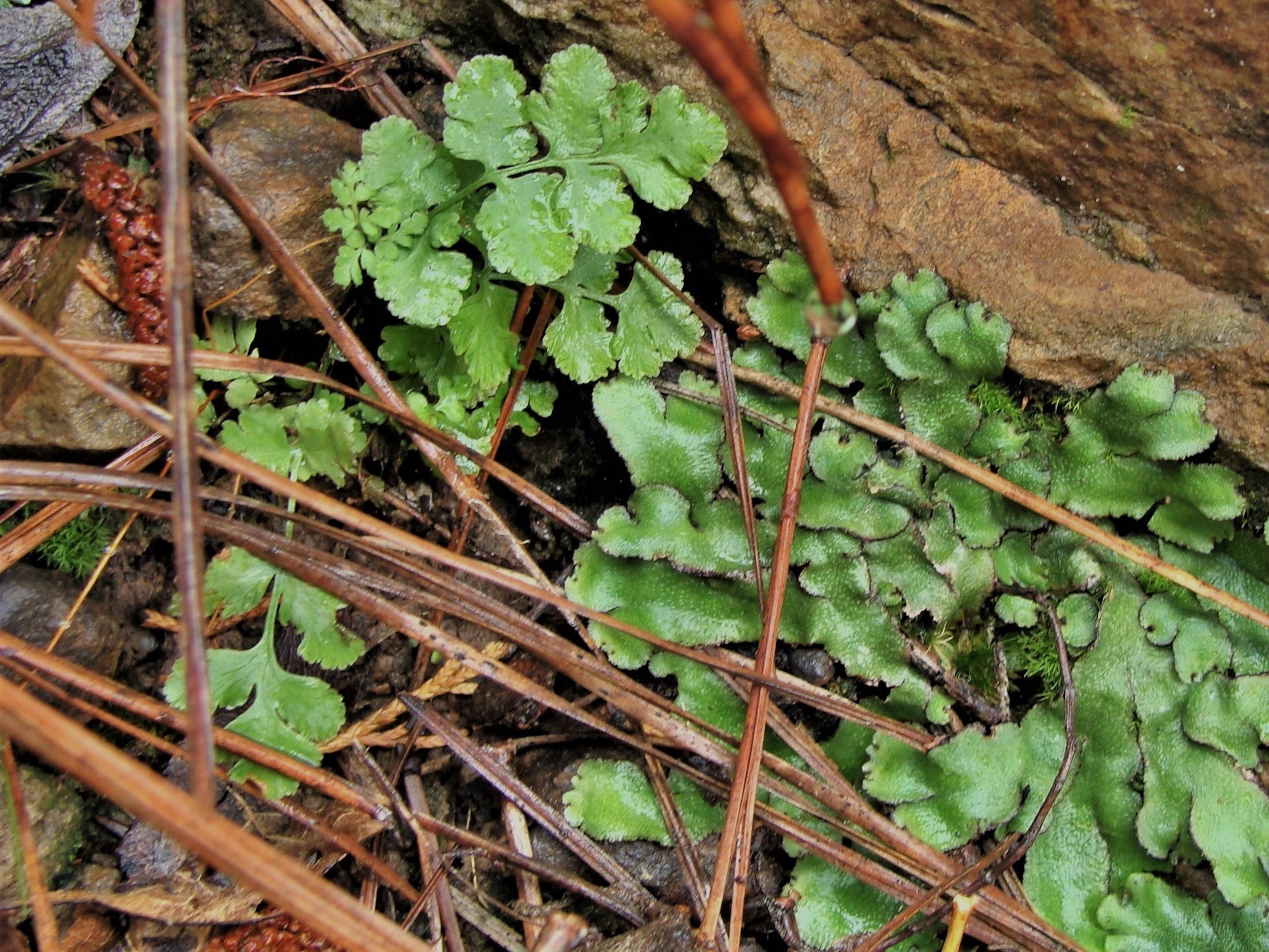
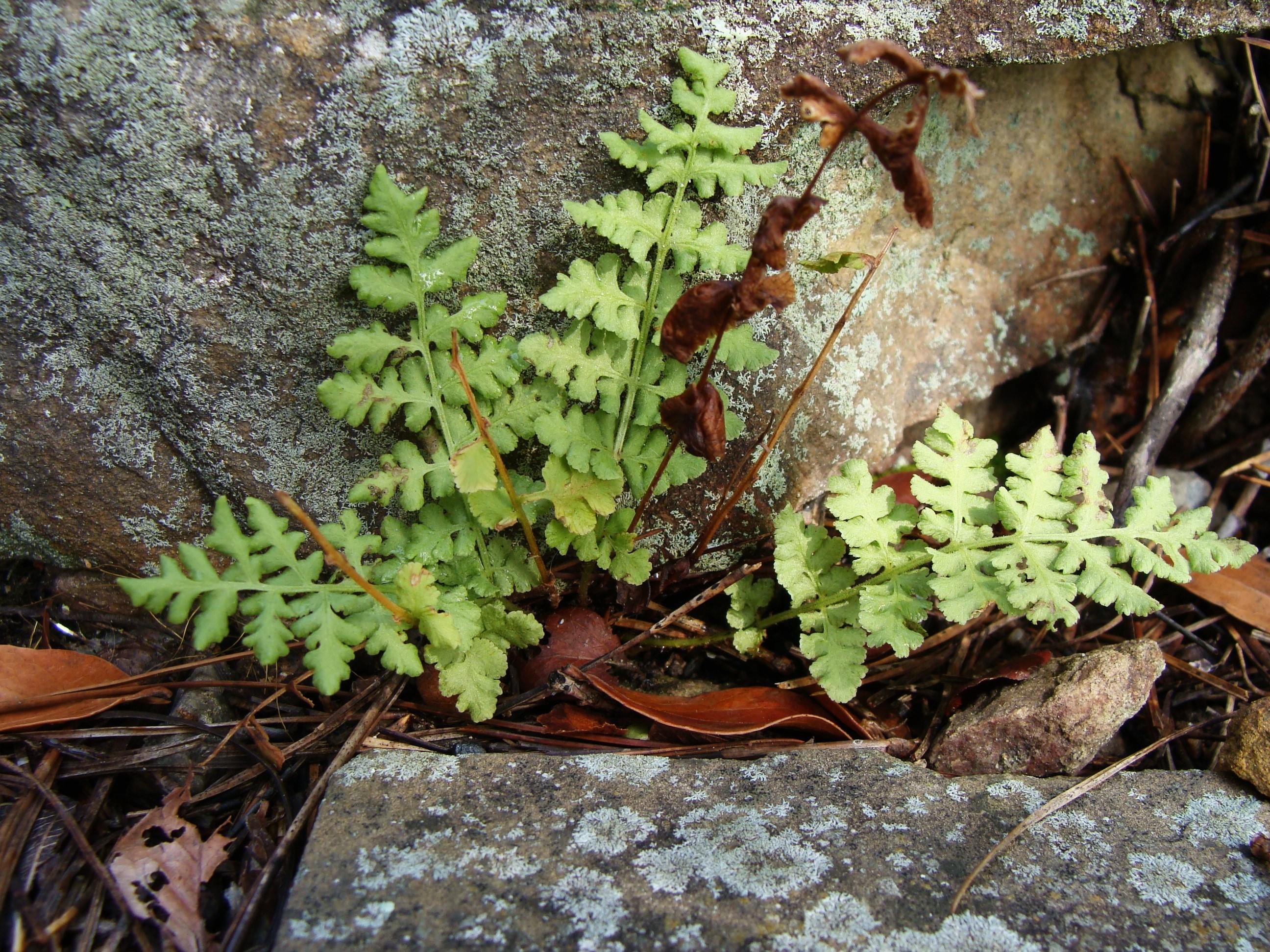
Plants, occurring singly or in small to large clumps, have elongate rhizomes with a narrowed, rounded base (point-of-origin) and a terminal bud from which fronds grow. Terminal buds may divide (ramify) into a pair of terminal buds which elongate into separate limbs of the rhizome. Fronds, growing from all “sides” of the terete (round in cross-section) rhizomes, twist sharply upward around the terminal bud to exit soil vertically as a compact cluster of fronds. The shallow, slow-growing rhizomes, ⅜ to ¼ inch diameter, are supported by a dense mat of spreading fibrous roots with long, unbranched thread-like central rootlets that bear closely spaced short lateral rootlets. Spiky, rather fragile, stalks (stipes) of dead fronds persist for a year or two. New fronds, appearing as coiled fiddleheads, are either fertile (bearing spores) or sterile (lacking spores) fronds.

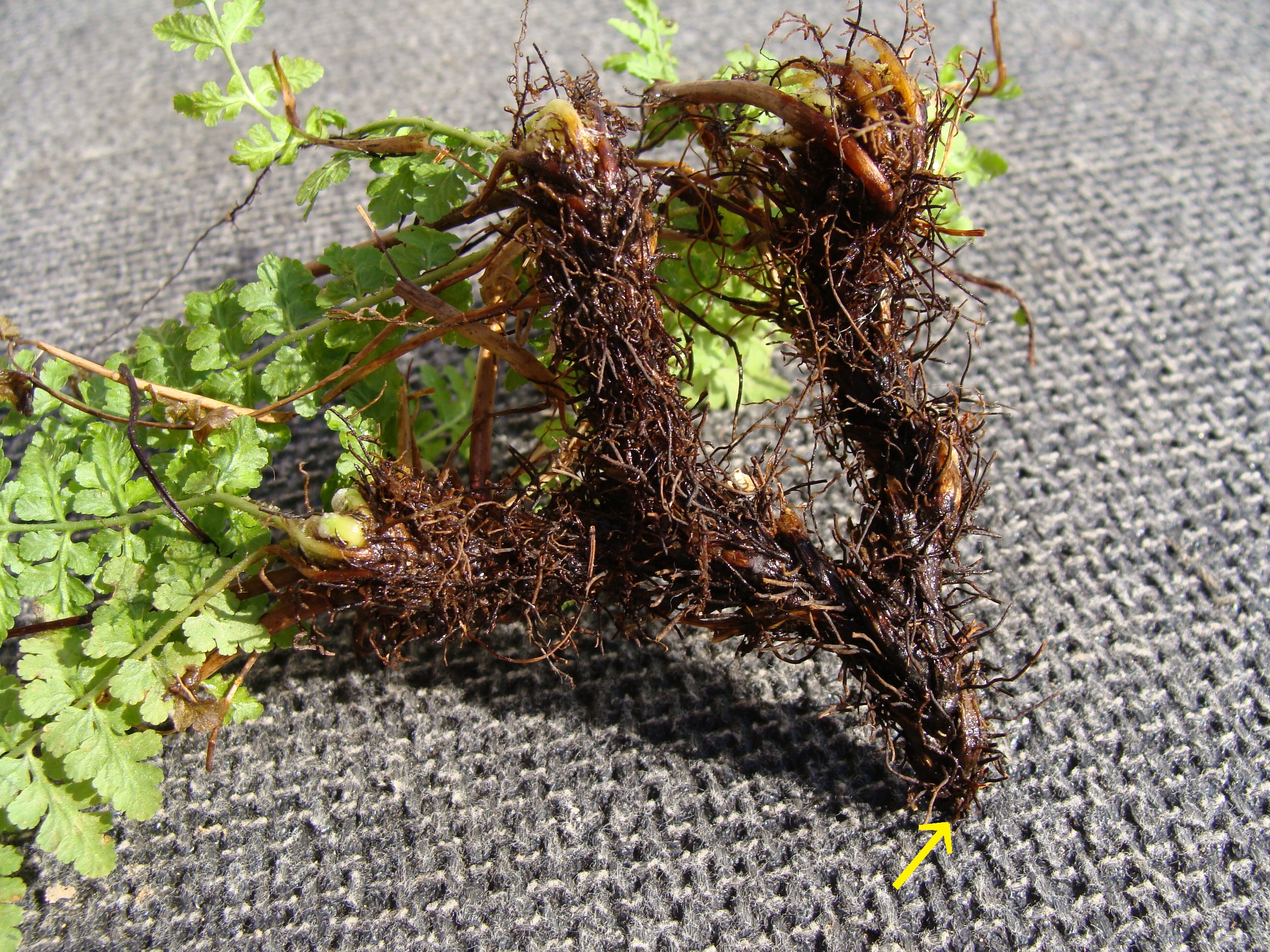
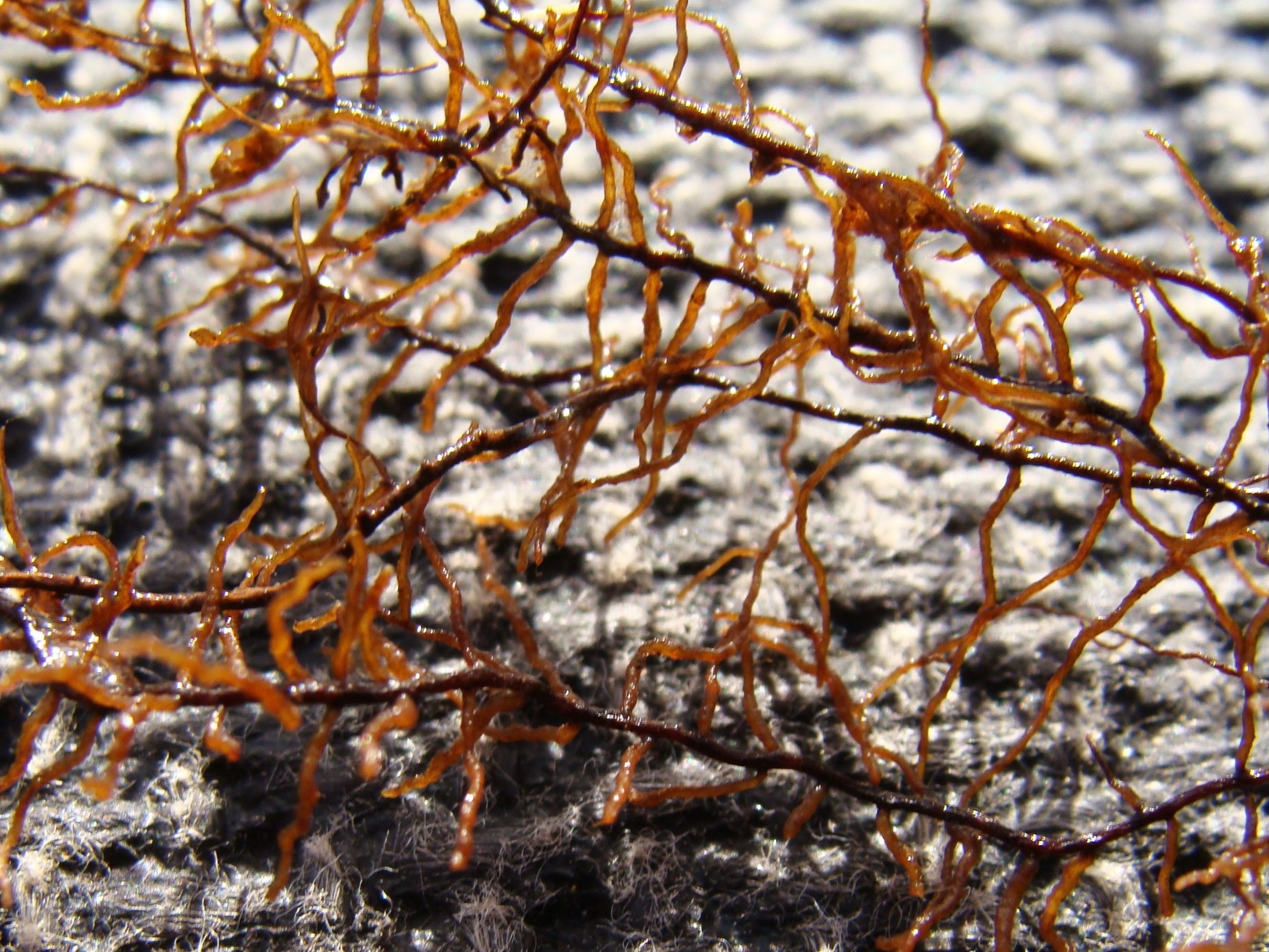
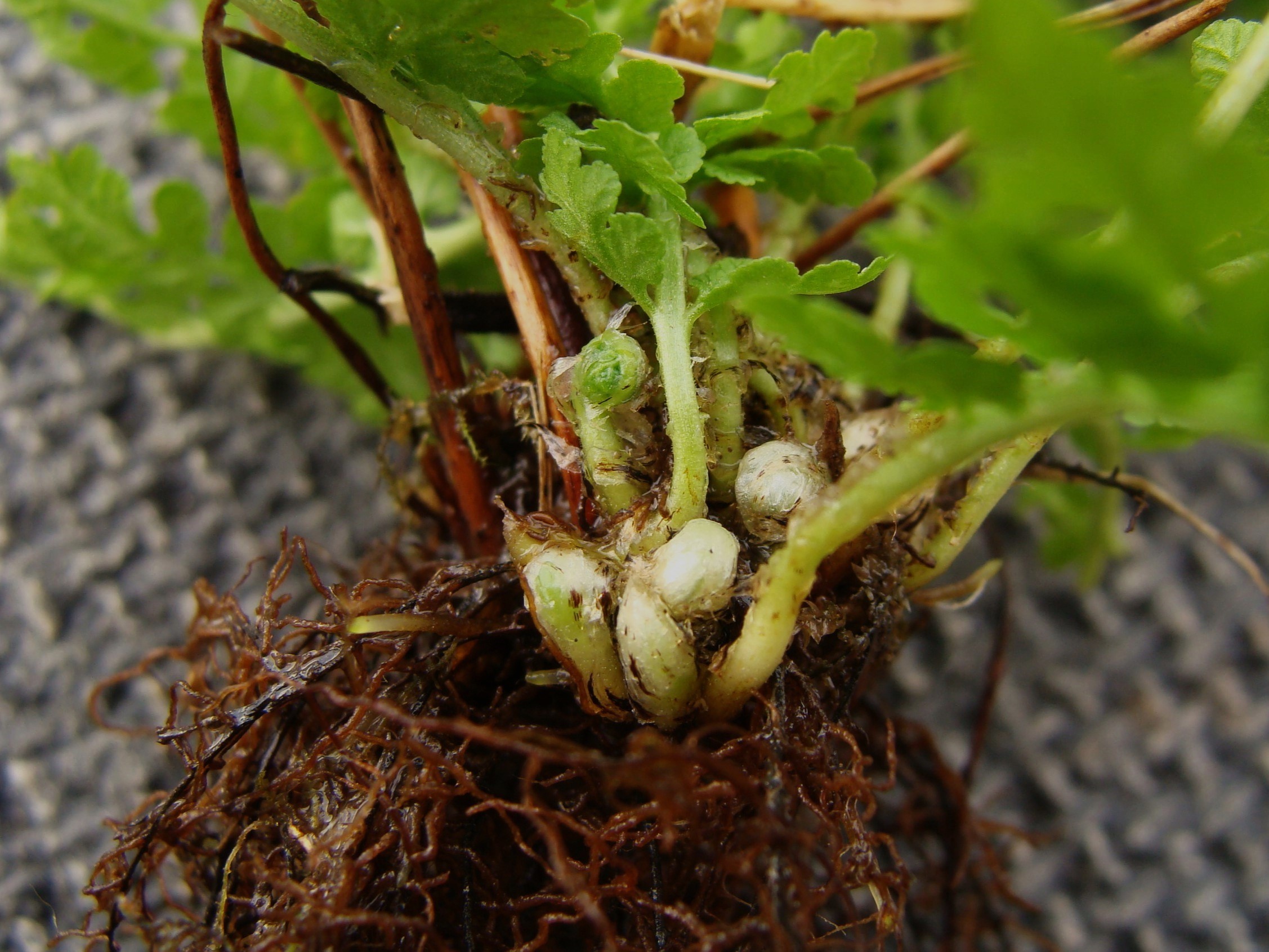
Size of plants varies considerably depending on soil moisture, soil depth, and sunlight. Early in the growth-year, sterile and fertile fronds have about the same appearance. By mid-spring, with development of spore-bearing structures (sporangia), fertile fronds become erect and spacing between pinnae pairs widens. While sterile fronds are produced throughout the year, fertile fronds appear in early spring and die after spore release in midsummer. The brittle, persistent stipes of dead fertile fronds are not articulated so that remnants of stipes are of various lengths.
Fronds have prominent scales and minute glandular hairs. The whitish to light brown translucent scales, scattered along the stipe and rachis (stalk bearing pinna), and costa (stalk bearing pinnae), become fewer and smaller toward frond apex. With frond maturity, scales drop-off. Without magnification, glandular hairs are not noticeable. The sparse to dense glandular hairs, with or without bulbous tips, may cover stipe, costa, and pinna.
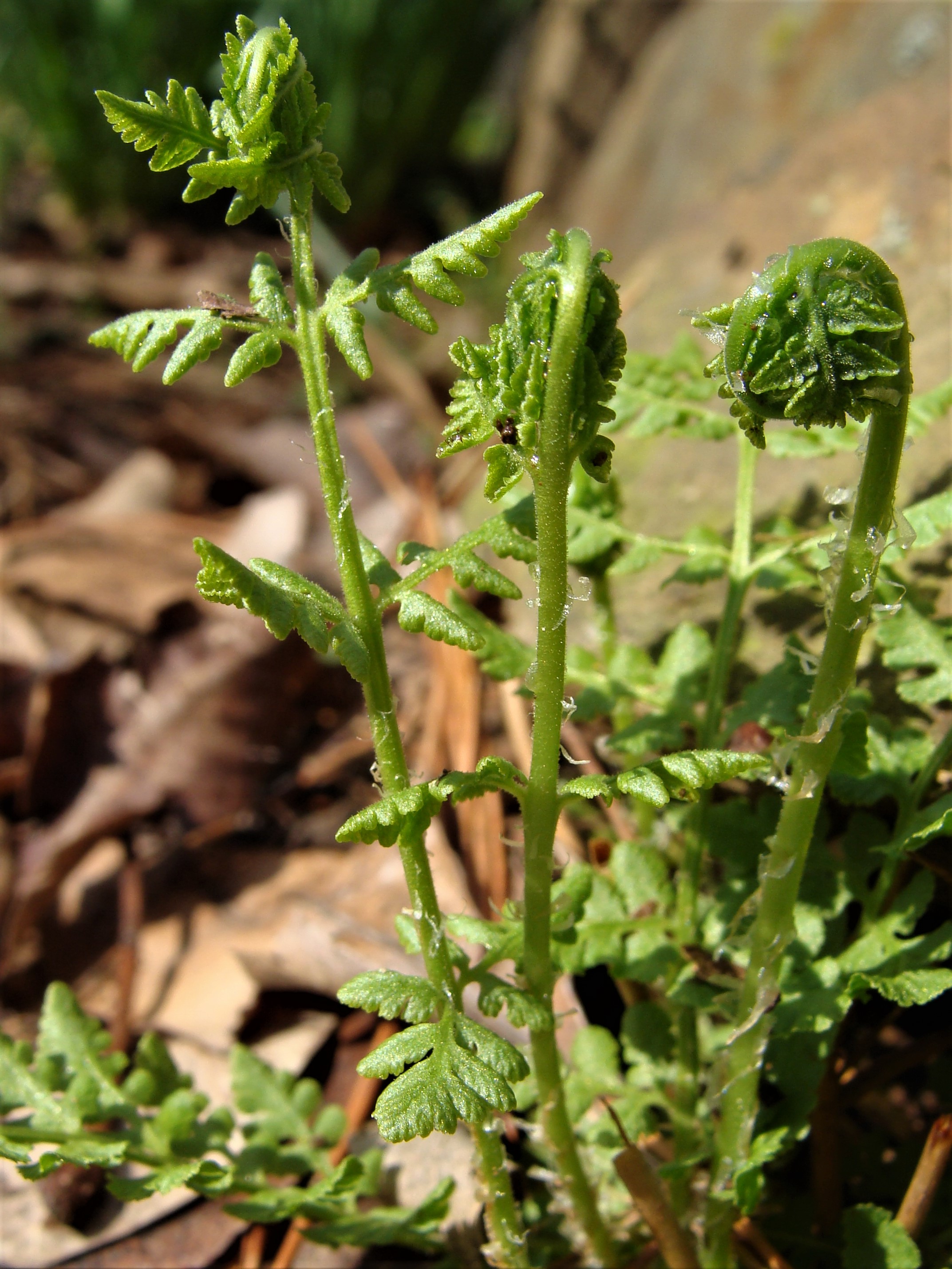
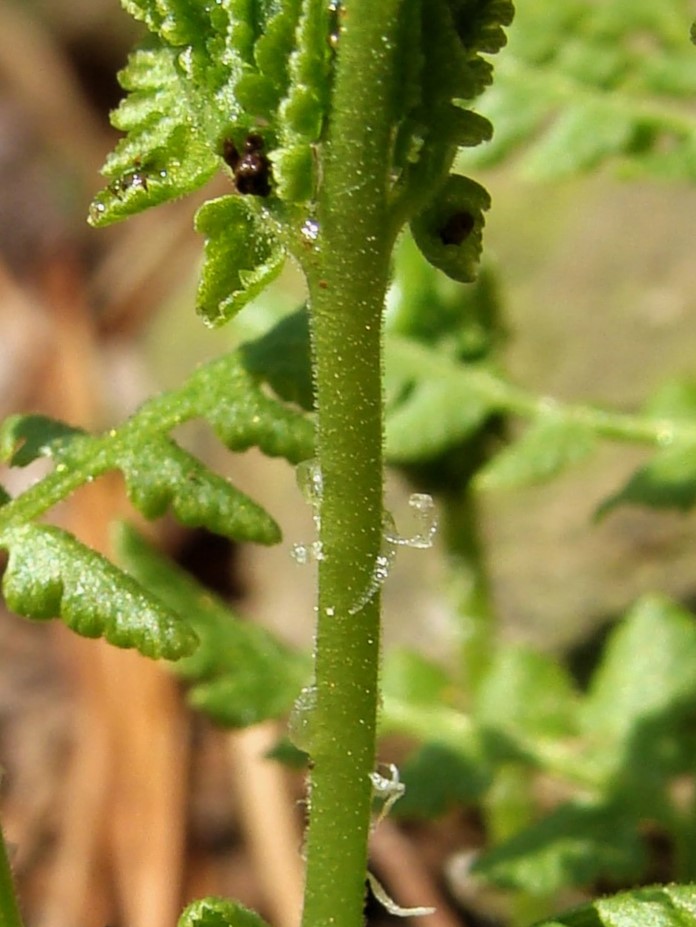
Fronds, 6-15+ inches long and to 3+ inches wide, are cut into 6-16 pairs of closely spaced (sterile fronds) to widely spaced (fertile fronds) pairs of pinnae. Pinnae, in turn, are cut into 4-14 opposite to alternate pairs of sub-leaflets (pinnules); a twice-cut fern. In outline, shorter sterile fronds are broad-elliptic, while longer fertile fronds are lance-elliptic. Fronds, widest along their mid-section, are pale to medium green on upper and lower surfaces. A central abaxial groove along stipes extends onto the rachises, costae and becomes the mid-vein of pinnules. Blade tissue is thin. Pinnate veins are obscure on both the upper and lower surfaces. Lowermost pair of pinnae on fertile fronds is noticeably shorter.
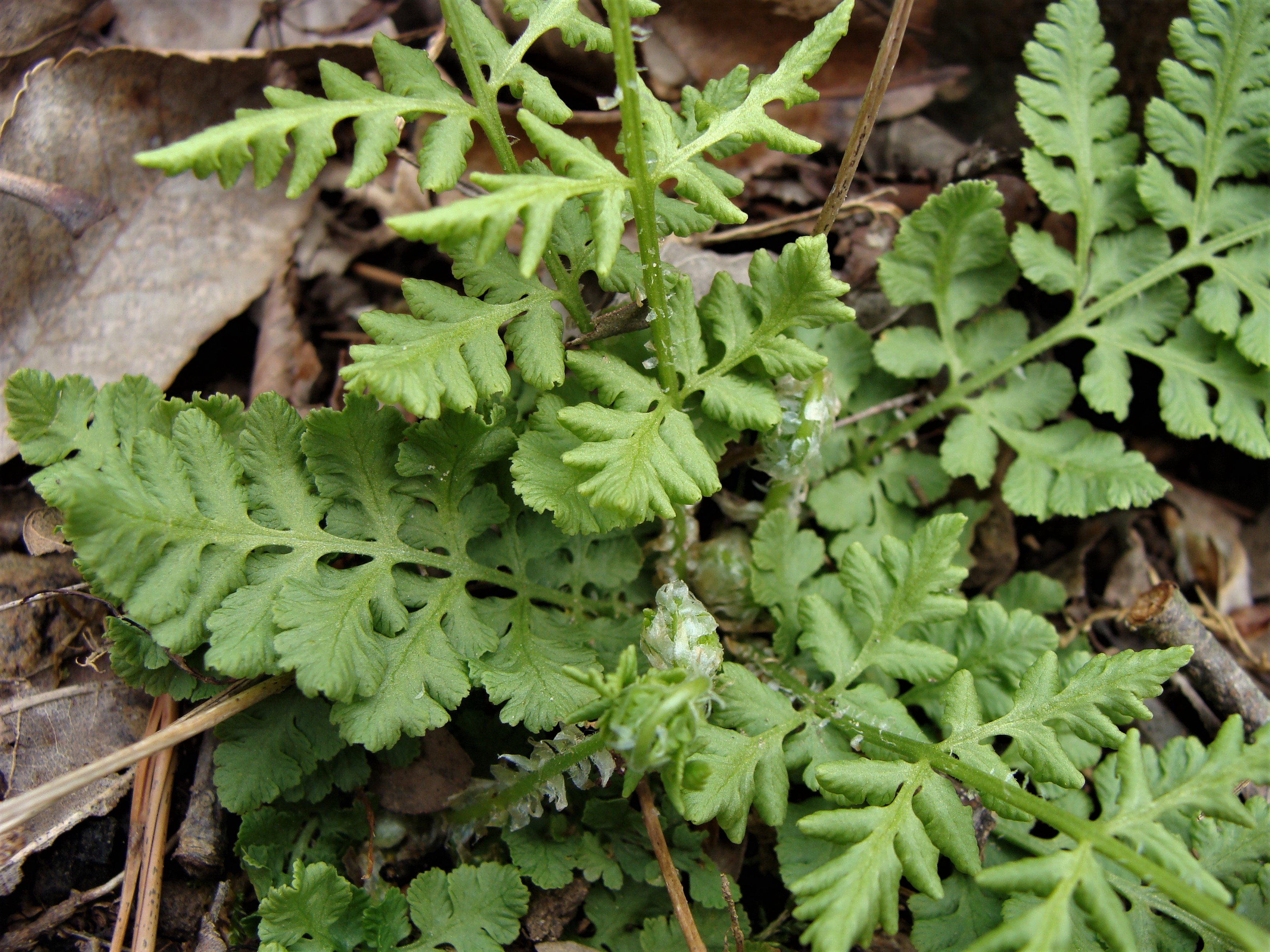


Paired pinnae, elliptic to ovate-elliptic in outline, are typically opposite to near-opposite, Pinnae pairs may become alternate above mid-frond and, approaching the frond apex, shortening pinnules become closely spaced to merging. Pinnae, with very short stalks (petiolules), are set at a right-angle to the rachis, with the entire pinnae gently angled toward the apices. Pinnae have narrowly to broadly acute (occasionally attenuate) apices. Pinnae of fertile leaflets are often narrow and pointed.
Pinnules may be rounded (typically for infertile fronds) or oblong (typically for fertile fronds). Those that are lower on pinnae, may be cut to the costae into “independent” pinnules or, those that are more distal, not cut to the costae so that they are lobe-like. The sessile pinnules are attached at about 45⁰ to the costae and trend toward tips of pinnae. Margins of pinnules typically have closely spaced, irregular, dentate to crenate teeth to shallow lobes. Pinnules decrease in size and merge distally to form an acute to obtuse apex. While sterile fronds typically have rounded pinnules, those of fertile fronds are typically elongate but may also be rounded. Margins of pinnules may be turned under (revolute).
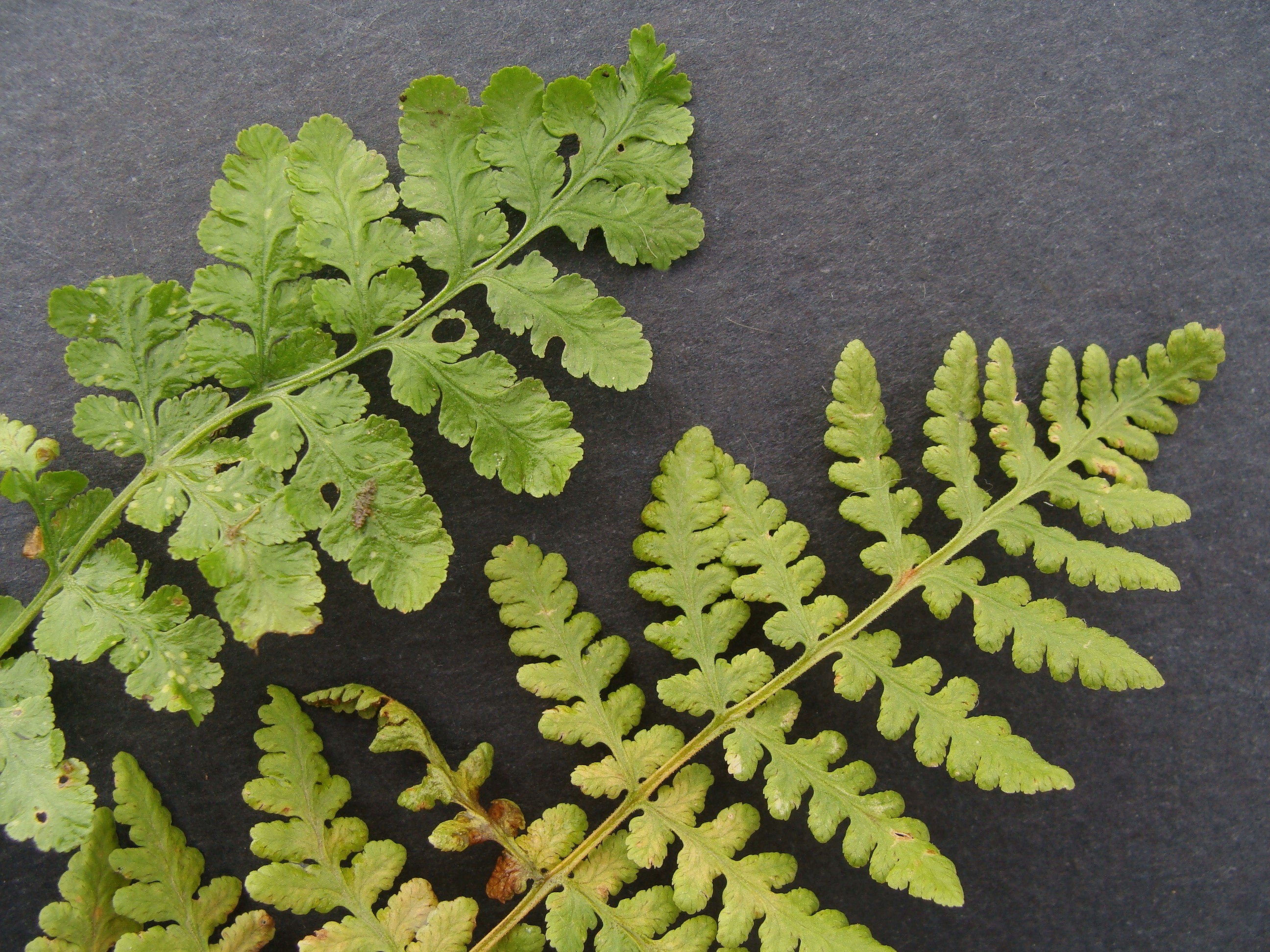
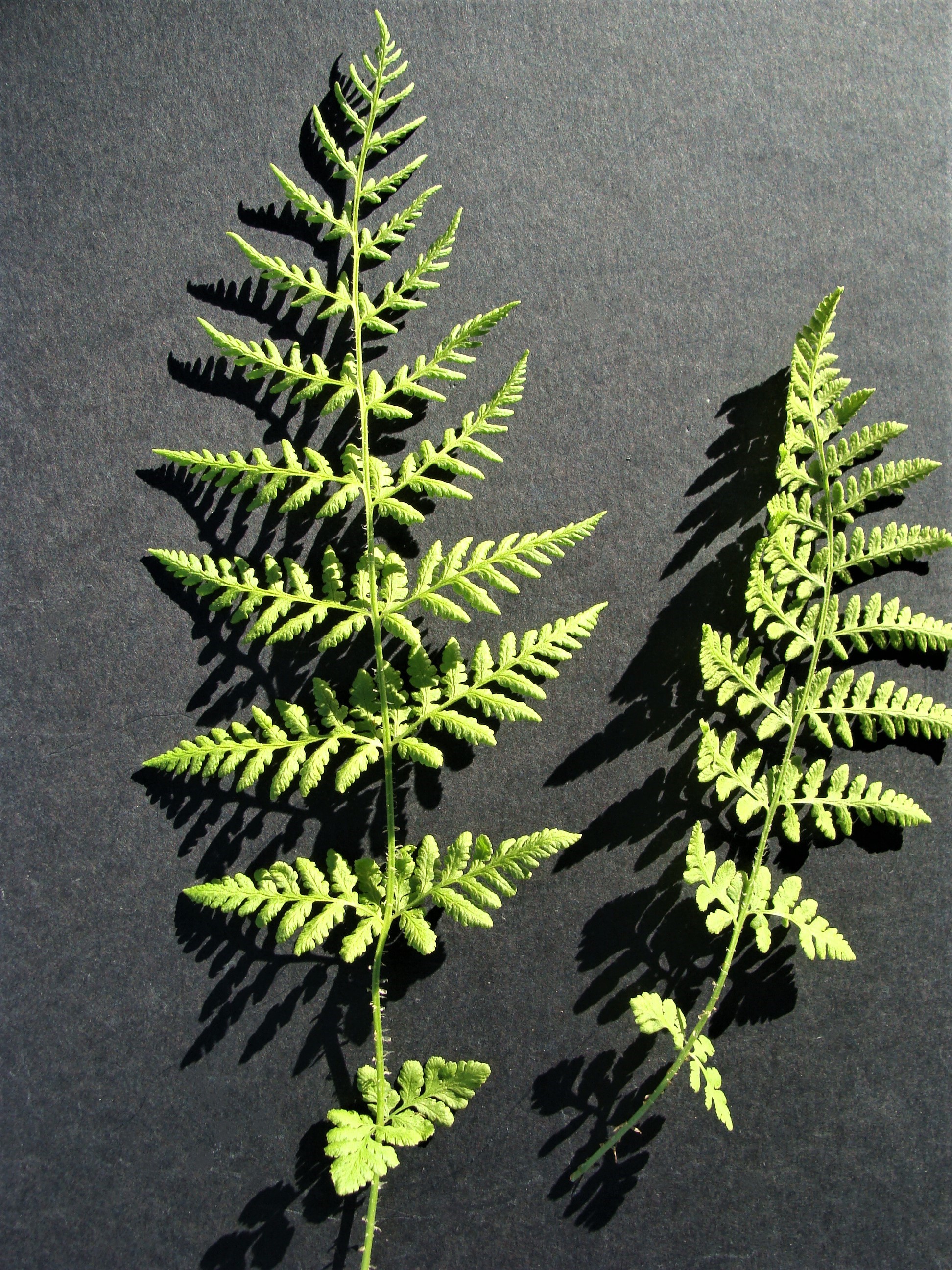
In mid-spring, circular, pale-green sori (sporangia-bearing structures) appear on the underside of fertile fronds. Sori (1/32-inch wide), singly or in groups of 2-3 per pinnule are in a line from pinnule-base to pinnule-apex. Sori are located between the pinna-midrib and side-margin. Within each sorus, 4-10 bead-like, light tan sporangia produce spores protected by a dome-like translucent indusia attached below the sorus. In late spring into early summer, the indusia splits across its top into irregular, broad-based segments which shrink away from the sporangia in star-pattern fashion. The sporangia splits on a dry day to release dust-like spores for wind dispersal. After spore release, sporangia have a frazzled appearance.





Blunt Lobed Woodsia may be a good choice as an accessory or in-fill plant in various garden settings that have partial to full shade with well-drained, preferably mesic, loamy to rocky soils. A good choice for fern gardens, rock gardens and natural areas. The fern may establish itself if a favorable environment is available. It is a compact, small to medium sized, evergreen fern with delicate fronds. Although it is an evergreen fern, fronds of established plants die with dry soil but new sterile fronds readily emerge with renewed moisture. Not suitable for wet soils or full sun.

Appalachian Cliff Fern (Woodsia appalachiana) is recorded from Logan and Perry Counties. Appalachian Cliff Fern, although generally similar to Blunt Lobed Woodsia, can be distinguished by having 1) frond stems that are chestnut brown to straw-colored, 2) scales on stipes only and 3) indusia that have several oblong lobes to one side. Blunt Lobed Woodsia has 1) pale green frond stems, 2) scales on stipes and rachises and 3) indusia lobes that open into a star-shaped pattern.
*A second subspecies of Blunt Lobed Woodsia occurs in Arkansas. Western Cliff Fern (Woodsia obtusa subsp. occidentalis) has smaller spores (measured in micrometers), rhizomes that are longer and thinner, and more finely divided leaflets.
**Ferns have a two-phase life cycle: the leafy sporophyte phase (two sets of chromosomes in each cell) and the microscopic gametophyte phase (one set of chromosomes in each cell). During the sporophyte phase, ferns bear leaves (fronds) of which some bear clusters of spore-producing sporangia in sori (aka fruit dots). Often, developing sori are protected by thin covers (indusia). The indusia split or shrink-back so that sporangia are exposed releasing spores into the breeze. A spore in a favorable environment, initiating the gametophyte phase, develops into a prothallus containing a structure (archegonium) which forms an egg and another structure (antheridium) which forms sperm – egg and sperm each having one set of chromosomes. Sperm moves through moist soil to join with an egg to produce a single cell zygote which grows a root into the soil (“point of origin” as used herein in regard to the rootstock) to begin the sporophyte phase.
Article and photographs by ANPS member Sid Vogelpohl

